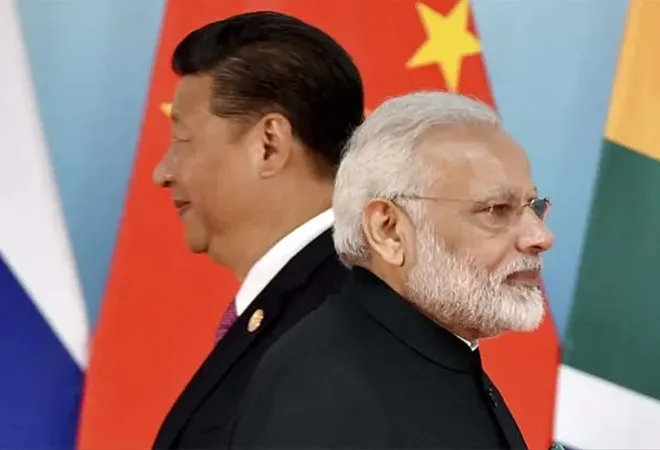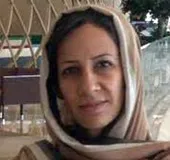
The ‘great game’ in Asia is slowly expanding from the Indo-Pacific in the east towards the Persian Gulf region. India and China’s increased presence and cooperation with the countries of this region—the hub of energy in the world—are indicative of the prospects of power relations between regional, continental, and global actors in this region. China’s
new initiative in the Gulf, in line with the country’s historical foreign political tradition, has developed in silence and managed to revive diplomatic ties between Iran and Saudi Arabia after several years; this is indicative of the beginning of the formation of a new regional order across the Persian Gulf.
While the relations between Iran and India had entered the stage of “strategic partnership” in the early years of the 2000s, these have slowly declined significantly in the last two decades. In fact, although both countries have emphasised the need to expand bilateral, regional, and international cooperation, the reality shows that the trend of cooperation has become less colourful today than what it used to be earlier. In the economic relations alone, the
official trade between the two countries has lowered from US$17 billion in 2017 to about US$2 billion in 2022. We have witnessed the same situation in the field of scientific cooperation and cultural and social relations as well as political and security ties.
Although both countries have emphasised the need to expand bilateral, regional, and international cooperation, the reality shows that the trend of cooperation has become less colourful today than what it used to be earlier.
One of the proposed ways to improve the level of cooperation between Iran and India was to let India take the initiative and play a mediating role to improve the relations between Iran and its southern neighbours. Considering India’s historical role and presence in the Persian Gulf region and owing to the country’s diplomatic capabilities to advance political dialogues between the two sides of the Persian Gulf—both interested in cooperating with India—it could create new capacities in the relations between India and its western neighbours. However, in recent years, India has tried to draw on such new initiatives as
I2U2—a grouping of India, Israel, the United Arab Emirates, and the United States, an
Indo-Abrahamic construct, and the India-Middle East Food Corridor to pave the way for the expansion of its economic, political, and security cooperation from the Persian Gulf to the Mediterranean coast. The investments in the
port facilities at Haifa in Israel and the expansion of cooperation with Egypt shows India's interest in increasing its role in the Mediterranean region.
The Indian foreign policymaking system has tried to define Iran’s position within the Central Asian complex and approached Chabahar Port as a route to have exclusive access to the North (including Afghanistan, Central Asia, the Caucasus, and Russia). It should be considered that Iran, apart from being able to play a key role in the International North-South Transport Corridor (INSTC), has always been the bridge connecting the East and the West for centuries. The country's connection with the Indian Ocean on the one hand and land links with Iraq and Türkiye, as well as historical links with some countries in the region such as Syria and Lebanon, have enabled Iran to act as a link.
The investments in the port facilities at Haifa in Israel and the expansion of cooperation with Egypt shows India's interest in increasing its role in the Mediterranean region.
Undoubtedly, China wants to be present in the Persian Gulf region to secure access to energy and to maintain its economic presence in the regional markets. Besides these two issues, China also wants to expand its transportation routes from east to west. China’s new approach in the Persian Gulf region and efforts to re-establish the broken ties between Iran and Saudi Arabia, somewhat representing the US doctrine of “
Two Pillars” under Richard Nixon’s Presidency in the 1970s, indicates that to have a stable presence and secure access to resources, markets and routes in Southwest Asia, it is still necessary to assume an exclusive policy and to recognise all the powerful actors in the region.
In recent years, India has tried to take the leadership of cooperative ideas among the countries of the Global South. Moreover, this great power has had the ability to provide the grounds for the establishment of dialogues between the world’s North and South in various areas. Throughout the history of India’s contemporary relations with the countries of the Persian Gulf region, New Delhi has also had a balanced policy towards Iran and Iraq during their eight-year war in the 1980s. The historical presence of millions of Indians on both sides of the Persian Gulf, from the provinces of Khuzestan, Bushehr, and Hormozgan in Iran between the 1900s and 1980s to their presence in the southern countries of the region since the 1970s is also indicative of the social ties between the Indian people and West Asian societies. Accordingly, India seems to have the capacity to play, once more, a stabilising role in its neighbouring region by taking new and comprehensive initiatives.
The views expressed above belong to the author(s). ORF research and analyses now available on Telegram! Click here to access our curated content — blogs, longforms and interviews.



 The ‘great game’ in Asia is slowly expanding from the Indo-Pacific in the east towards the Persian Gulf region. India and China’s increased presence and cooperation with the countries of this region—the hub of energy in the world—are indicative of the prospects of power relations between regional, continental, and global actors in this region. China’s
The ‘great game’ in Asia is slowly expanding from the Indo-Pacific in the east towards the Persian Gulf region. India and China’s increased presence and cooperation with the countries of this region—the hub of energy in the world—are indicative of the prospects of power relations between regional, continental, and global actors in this region. China’s  PREV
PREV


